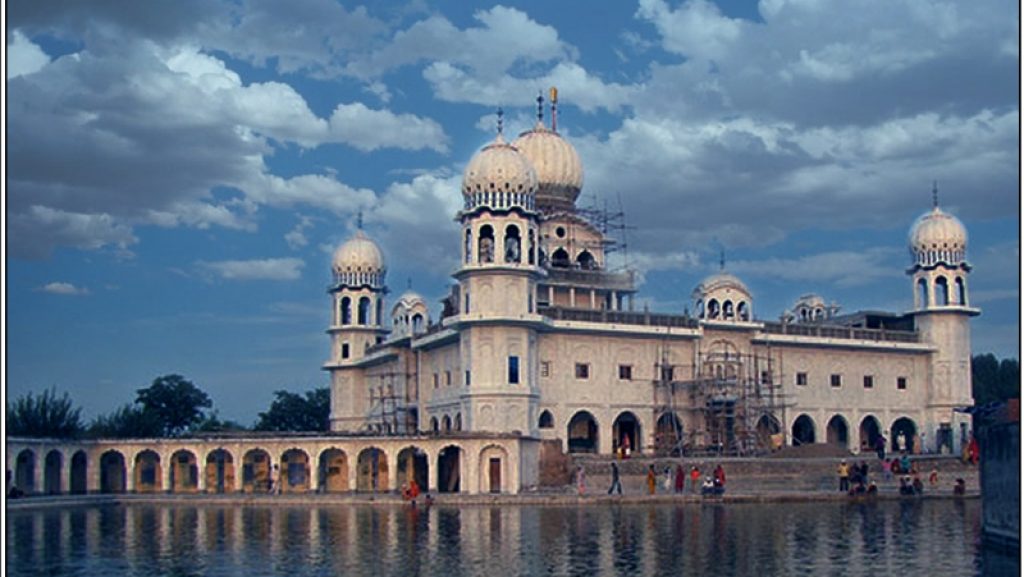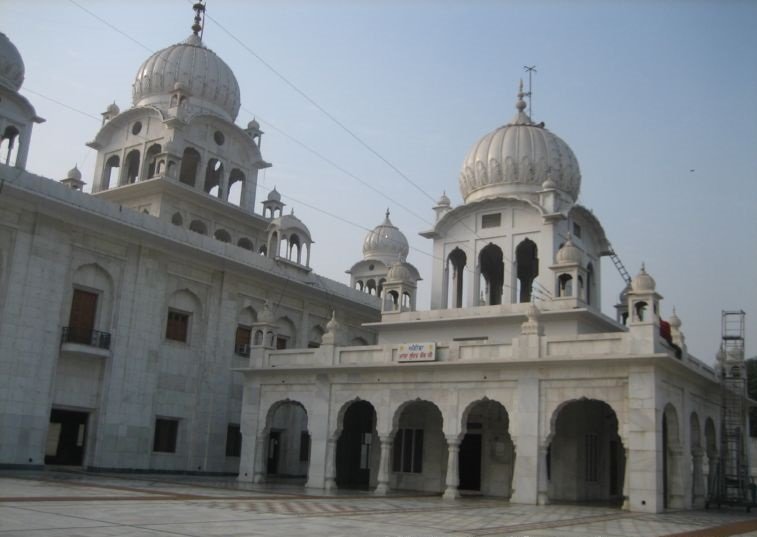Sacred Shrines of Guru Harkrishan
The journey of the eighth Sikh Guru Har Krishan Sahib is interwoven with 4 Sacred Shrines (Gurudwaras) of spiritual importance that hold a deep resonance in Sikh history. These Gurudwaras are not just places but witnesses to the Guru’s life, teachings, and the transformative events that happened around him. Let us make a spiritual journey to these holy places and learn about their inseparable links with Guru Har Krishan Sahib. Each of these sites bears its own specific story, which contributes to the rich page of the history of Sikh Gurus.
Kot Sahib
Kot Sahib is where Guru Har Krishan was appointed as his father’s successor, the eighth Guru. Guru Har Rai, feeling his end to be imminent wanted to nominate his successor. He realized that Ram Rai, his eldest son, was not fit to take Guruship and bestowed it upon Har Krishan, his youngest son.

Having come to this resolution, the Guru summoned a large crowd of Sikhs for this important event. Minstrels sang songs and the atmosphere was filled with music. Guru Har Rai placed his five-year-old son, Hari Krishan, upon a grand throne at the center of the crowd. He kept a coconut and five paise in front of young Guru, went around him four times, and applied the tilak on his forehead. The Sikh congregation stood up as one person and honored Guru Har Krishan. Thus, Guru Har Rai commanded his Sikhs to treat Har Krishan as his embodiment and have absolute faith in him to save their spiritual world.
Panjokhra Sahib
One notable place in Sikh history is Panjokhra Sahib, which is found in the Ambala district. The village was considered holy when Guru Har Krishan, the eighth Guru of Sikhs, visited it. On his way to Delhi, Guru Har Krishan halted at Panjokhra. As he approached his destination, he made clear a limit of sand beyond which his followers were not to step, allowing him to travel without wasting time. He said that all the Sikhs who desired his blessings could stand within that boundary and pray and their wishes would be granted.

Therefore, a Brahmin water carrier called Chhajju, who resided in the village, was summoned. Guru Har Krishan, looking at Chhajju, said “You are now a scholar of theology. Speak about your ideas with the Brahmin”. Surprisingly the Brahmin was dumbstruck when Chhajju provided such profound interpretations. Convincing himself that the Guru gave Chhajju divined wisdom, he humbly asked forgiveness for his earlier behavior and acknowledged Guru Har Krishan as the real manifestation of Krishna. Guru kindly accepted him as a disciple and commanded him not to become conceited, arrogant, full of false pride, and egoistic.
Panjokhra Sahib is a revered site among the Sacred shrines of Guru Harkrishan Sahib, which is considered sacred and where a shrine has been built to mark the turning point that occurred there.
Bangla Sahib
The following occurred after Guru Har Krishan’s succession; Ram Rai refused his sibling for being the Guru and started to oppress him. Guru Har Rai did not approve of Ram Rai because earlier he had misled some hymns from Sri Guru Granth Sahib to appease his father, Emperor Aurangzeb. Ram Rai complained to the Emperor that the missionary effort of Guru Har Krishan and the precedent of his predecessors would be wasted with a child Guruship. The suggestion was also made that the followers of the Sikh leader might cause a state of unrest in the Punjab.
Aurangzeb got a chance to employ Ram Rai when he succeeded in convincing Guru. Nevertheless, when the Emperor’s summon reached Kiratpur, Guru Har Krishan decidedly declined to go. The Guru’s visit to Delhi even caused fear in the minds of many Sikhs in Delhi. However, things took a different turn as both Mirza Raja Jai Singh and Raja Ram Singh stepped in.

Raja Jai Singh persuaded Guru Har Krishan to visit Delhi. He also managed to get from the Emperor the promise that Guru Har Krishan would stay in his residence till he became content with the succession issue.
A courtier was sent, bearing gifts of great worth, from Raja Jai Singh to Kiratpur for Guru. The Rajas warmly welcomed Guru Har Krishan and made him stay in his Raisina residence. However, Guru Har Krishan refused to go and visit the Emperor and turned down all proposals intended to make Aurangzeb accept the verdict by his father. Sikhs flocked to the house where the Guru stayed in search of blessings.
The Gurdwara Bangla Sahib is the most famous pilgrimage place among the sacred shrines of Guru Harkrishan Sahib which is located near Gole Post Office near Connaught Place in New Delhi. Water collected at Chobacha Sahib within Gurdwara premises is considered the holiest water and is believed to heal various diseases. It is in July that the birth anniversary of Guru Har Krishan is celebrated at Bangla Sahib and a new tank is under construction within the Gurdwara complex.
Gurdwara Bala Sahib
Guru Har Krishan was critically ill with smallpox in March 1664 in Delhi. On the fifth day of his illness, he confided in his mother and said his end was drawing near. His mother, overcome with grief and tears, posed a poignant question to the Guru: “Who will follow you and take control of the Sikhs during this turning point in the Sikh’s history? How shall I remain in this world without my faithful and dutiful son, who defended the throne of our Guru from the intrigues of numerous malicious enemies and traitors? Adversaries like such may torture me and disturb my peace. Worse still, I shall be alone. Where can I find your successor?” The Guru, with a gentle smile and a hushed voice, responded: “Dear and loving mother, do not have any worry at all. All in all, you have lived a good life. The rest of your days, spend in the service of the Almighty, who will fulfill all thy wishes. Recall the Lord who feeds you and fills up your lack. When you focus on Him, there is a stage in your life where you will leave out all sadness and never be apart from me.

His mother was touched by these tender words from the guru. He told everyone not to mourn his death but to hymns from Sri Guru Granth Sahib. As the Guru’s health situation continued to decline, he finally breathed his last on the 30th of March 1664 when he was only 8 years old. He united his divine light with the light of Baba of Bakala, Guru Nanak’s light. The physical remains of Guru Har Krishan were cremated on the banks of the river Yamuna, where Gurdwara Bala Sahib stands today.
As per the Guru’s wishes, there were no mournful cries, sobs, or lamentations, but only the resounding chants of sacred hymns and the recitation of the Lord’s Name. Last among the sacred Shrines of Guru – Gurdwara Bala Sahib is located near the Nizamuddin railway station in New Delhi, serving as a reminder of this significant chapter in Sikh history.




